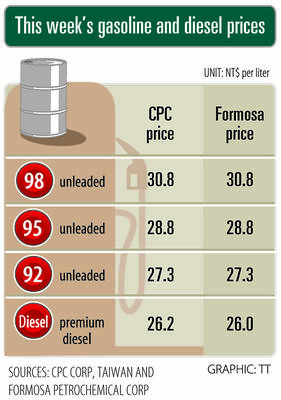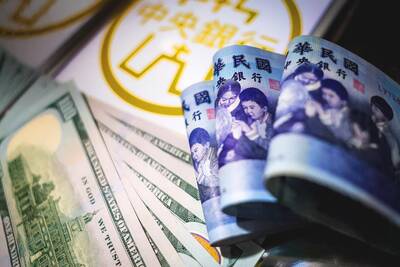Considered by many to be Mexico's culinary capital, this city took on McDonald's and won, keeping the hamburger giant out of its colonial plaza by passing around tamales in protest.
But not everyone is rejoicing over Oaxaca's victorious food fight. Many say the bitterly poor state -- while rich in traditions -- can't afford to turn down potential employers, much less slam the door on an international company.
City officials decided this week to prohibit the golden arches from doing business under the historic stone archways of Oaxaca's 16th century central plaza, also known as the zocalo. The battle has divided this picturesque community between those who want to preserve its cultural identity and others who simply want a job.
It's not the only fight in Mexico against a well-known US name. Protesters in the wealthy resort city of Cuernavaca, in the mountains outside Mexico City, are calling for an international boycott of Costco after the retail giant began tearing down a historic casino and cutting down trees to build a wholesale center.
McDonald's boasts that a new restaurant opens somewhere in the world every four hours, but in many countries the invasion of American fast food has prompted protests.
In Oaxaca, the fight was led by Mexico's most famous living artist, Francisco Toledo. During their four-month campaign, Toledo and his supporters plastered the proposed restaurant location with signs reading "No McZocalo" and "We don't want McDollars" while handing out traditional Oaxacan tamales and atole -- a thick drink made of corn starch -- to passers-by.
Opponents collected close to 10,000 signatures against McDonald's in a region famous for its cuisine, including its thick, chile-based mole sauces often served over chicken.
Like many Mexican cities, the zocalo is the community's showcase for both its treasures and its troubles. Lined by cafes where tourists pass the day sipping the region's coffee and hot chocolate, the leafy square hosts everything from folk dances to campaign speeches.
Teachers have packed into it to protest low wages, jockeying for space next to Zapotec and Mixteco Indians selling their traditional weavings and pottery. Loxica Indian women lived on a section for nearly five years to demand the release of husbands accused of being guerrilla fighters.
Elderly women wearing hand-woven black and white shawls hawk bags of spicy grasshoppers -- a local delicacy -- outside the city's ornate, baroque cathedral.
"This place is not for McDonald's," said Toledo, a quiet, easygoing man who helped form a historic preservation group six years ago. "This is a sacred space."
Toledo said McDonald's, which already has one restaurant at a shopping center on the outskirts of the historic center, can open its doors elsewhere in the city. McDonald's officials could not be reached for comment.
But a statement from its Mexican branch said it has always been "respectful of the rules and laws of the cities where we have businesses," and added that, in the case of Oaxaca, it had "complied with authorities requirements."
Some fear the fight may have scared off other international companies interested in Oaxaca.
"This was a step backward for us," said Maria Elena Room, 37, head of sales at a Mexican department store. "We need foreign businesses for our economy to grow."
McDonald's is popular in Mexico, where it has built nearly 270 franchises since the first one opened in 1985.
Iliana de la Vega, who runs the internationally renowned Oaxacan restaurant, El Naranjo, said censuring businesses worries her more than bad taste.
"I don't like McDonald's," said Vega, who also teaches traditional Oaxacan cooking classes. "But we should have the choice."

SETBACK: Apple’s India iPhone push has been disrupted after Foxconn recalled hundreds of Chinese engineers, amid Beijing’s attempts to curb tech transfers Apple Inc assembly partner Hon Hai Precision Industry Co (鴻海精密), also known internationally as Foxconn Technology Group (富士康科技集團), has recalled about 300 Chinese engineers from a factory in India, the latest setback for the iPhone maker’s push to rapidly expand in the country. The extraction of Chinese workers from the factory of Yuzhan Technology (India) Private Ltd, a Hon Hai component unit, in southern Tamil Nadu state, is the second such move in a few months. The company has started flying in Taiwanese engineers to replace staff leaving, people familiar with the matter said, asking not to be named, as the

The prices of gasoline and diesel at domestic fuel stations are to rise NT$0.1 and NT$0.4 per liter this week respectively, after international crude oil prices rose last week, CPC Corp, Taiwan (台灣中油) and Formosa Petrochemical Corp (台塑石化) announced yesterday. Effective today, gasoline prices at CPC and Formosa stations are to rise to NT$27.3, NT$28.8 and NT$30.8 per liter for 92, 95 and 98-octane unleaded gasoline respectively, the companies said in separate statements. The price of premium diesel is to rise to NT$26.2 per liter at CPC stations and NT$26 at Formosa pumps, they said. The announcements came after international crude oil prices

DOLLAR SIGNS: The central bank rejected claims that the NT dollar had appreciated 10 percentage points more than the yen or the won against the greenback The New Taiwan dollar yesterday fell for a sixth day to its weakest level in three months, driven by equity-related outflows and reactions to an economics official’s exchange rate remarks. The NT dollar slid NT$0.197, or 0.65 percent, to close at NT$30.505 per US dollar, central bank data showed. The local currency has depreciated 1.97 percent so far this month, ranking as the weakest performer among Asian currencies. Dealers attributed the retreat to foreign investors wiring capital gains and dividends abroad after taking profit in local shares. They also pointed to reports that Washington might consider taking equity stakes in chipmakers, including Taiwan Semiconductor

A German company is putting used electric vehicle batteries to new use by stacking them into fridge-size units that homes and businesses can use to store their excess solar and wind energy. This week, the company Voltfang — which means “catching volts” — opened its first industrial site in Aachen, Germany, near the Belgian and Dutch borders. With about 100 staff, Voltfang says it is the biggest facility of its kind in Europe in the budding sector of refurbishing lithium-ion batteries. Its CEO David Oudsandji hopes it would help Europe’s biggest economy ween itself off fossil fuels and increasingly rely on climate-friendly renewables. While